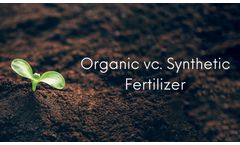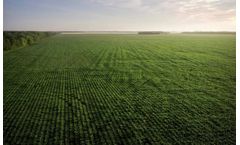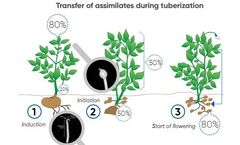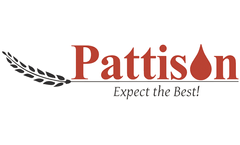Crop Requirement Articles & Analysis
49 articles found
Feeding your plants is a fundamental aspect of nurturing a thriving garden, whether you’re aiming for a bountiful harvest or flourishing blooms. However, the choice of fertilizer significantly impacts the health of your plants and the environment. There are two primary types of fertilizers – organic and synthetic. In this article, we’ll delve into the pros and cons of each, ...
Water Management: Biochar improves soil water retention capacity, reducing irrigation requirements and enhancing drought tolerance in plants. Its porous structure allows for better water infiltration and drainage, reducing soil erosion and runoff. Crop Productivity: Incorporating biochar into agricultural soils has been shown to increase crop ...
Essential nutrients, categorised as micronutrients and macronutrients, play key roles in sustaining the plant’s life cycle. Micronutrients, required in smaller amounts and macronutrients needed in larger amounts are essential for achieving optimal plant growth. ...
Did you know that onions are the most cultivated crop in The Netherlands? and that it is the most widely cultivated species of the genus Allium worldwide? ...
On-farm weather stations and soil moisture probes take the guesswork out of seeding plans and execution As the 2023 seeding season is fast approaching, why not end the soil moisture guessing game on your farm? Especially when you have technology available to inform weather-related planning and crop management decisions. Precision crop management tools, including on-farm weather stations and soil ...
Up your defenses against unpredictable Mother Nature with an on-farm weather station’s accurate weather monitoring, forecasting and historical data There’s a long-enduring sentiment in Canadian agriculture that when farmers gather, they’re usually talking about the weather. There’s a good reason for this. After all, there are many things you can control on the farm from ...
INTRODUCTION: CROP AREA ESTIMATION The two components of agricultural production estimation are crop area and yield estimation. In order to estimate yield, Producers generally measure the amount of a particular crop harvested in a sample area to estimate crop yield. The harvested crop is then weighed, and the ...
Craig Bews adopted variable rate technology on his Eatonia, SK farm over a decade ago. Bews has always had a passion for farming. A third generation farmer, Bews and his son, Darren, farm 10,000 acres in west central Saskatchewan. After trying a variety of crops over the years, they now grow primarily durum, canola and red lentils. The name ‘Duthie Farms’ derives from Craig’s ...
Gardeners and farmers have debated the clash between sustainable agriculture and energy crop cultivation technologies that allow bioenergy and biomass crops to be grown on agricultural land. ...
The main challenge for farmers at the end of the tuber initiation phase is to achieve a high number of tubers above 15 mm. Any tubers that do not reach this size shrink and disappear. The main challenge after the tuber initiation phase is to optimise the reserves and obtain a maximum of marketable ...
Western Canada has a short growing season which makes another pass for top dressing fertilizer sometimes difficult to achieve. Many crops have the fertilizer applied during the seeding season with Liquid Distribution Systems, (like these kits we make here). Often this will meet the crops fertilizer requirements for the whole season. Making one ...
Crop Nutrient Uptake and Removal Farming today is an increasingly complex business. ...
In the hydroponic crops, the plants complete their vegetative cycle without the necessity of using the soil. ...
Outbreaks of locust swarms in Africa, Asia and the Middle East have epitomised the essential need for indoor farming. Unseasonal rains caused by global warming, have aided the spread of desert locusts which would normally have died out in the dry season. Ethiopia and Somalia are currently experiencing their worst outbreak in twenty-five years, while Kenya is experiencing its worst infestation in ...
Pepper, tomato and cucumber crops require consistent levels of light for year round production. There are many things to consider before investing in a lighting solution and understanding your growing environment – and the goals you want to achieve – will help in choosing a system that best suits your needs. ...
Once a timeline is established for kernel development we can focus on monitoring plant available water until the onset of hull split; a process that requires both the estimation of crop water requirements as well as in-field measurements. ...
Common factors that affect suggested N rates are timing of application, climate, crop rotation, tillage system and soil productivity. When using too little N, a crop such as corn results in lower yields and reduced profits. However, if too much N is applied, profits will be reduced, and environmental impact is likely to occur. Applying most the ...
Northern of Latvia is region where there are relatively many crops with ecological berry plantations – including currants. As a company, we had the opportunity to personally see it in June this year. Together with our dealer – the SIA POLTEH company we took part in the Farm’s Open Day ( which was organized by ones of the local berry’s producers. The event was accompanied ...
The remaining 0.03 percentage of water is distributed: • mainly to agricultural land and crop irrigation • to the livestock industry • and a very small percentage for potable use There is frequent reference to phenomena such as global warming and its devastating consequences, floods, heatwaves and other extreme weather conditions that result in problems with ...
” Any departure from normal seasonal moisture – either too wet or too dry – could be devastating to his crops. To help better conserve and manage available moisture, he began integrating cover crops into his no-till rotation five years ago. ...















